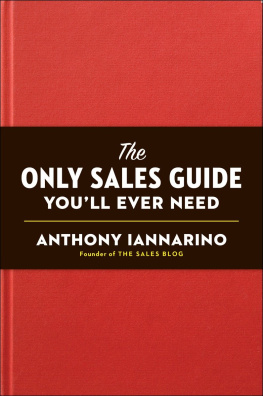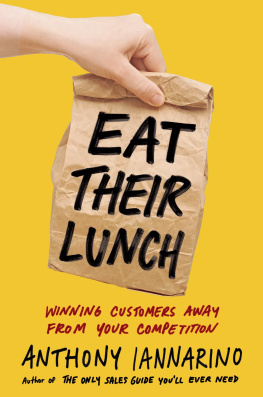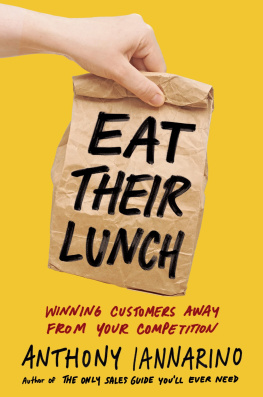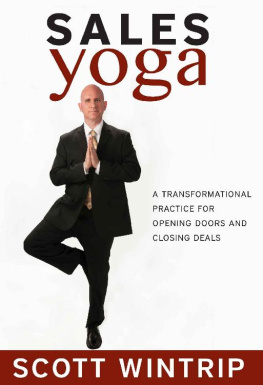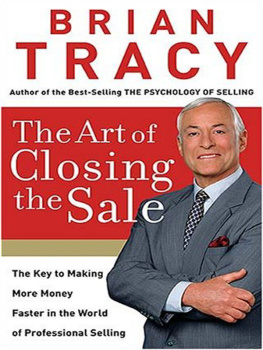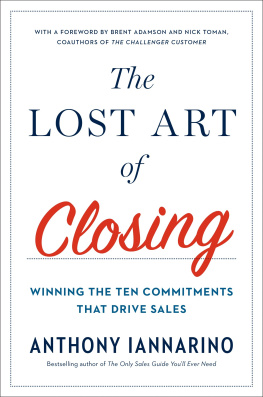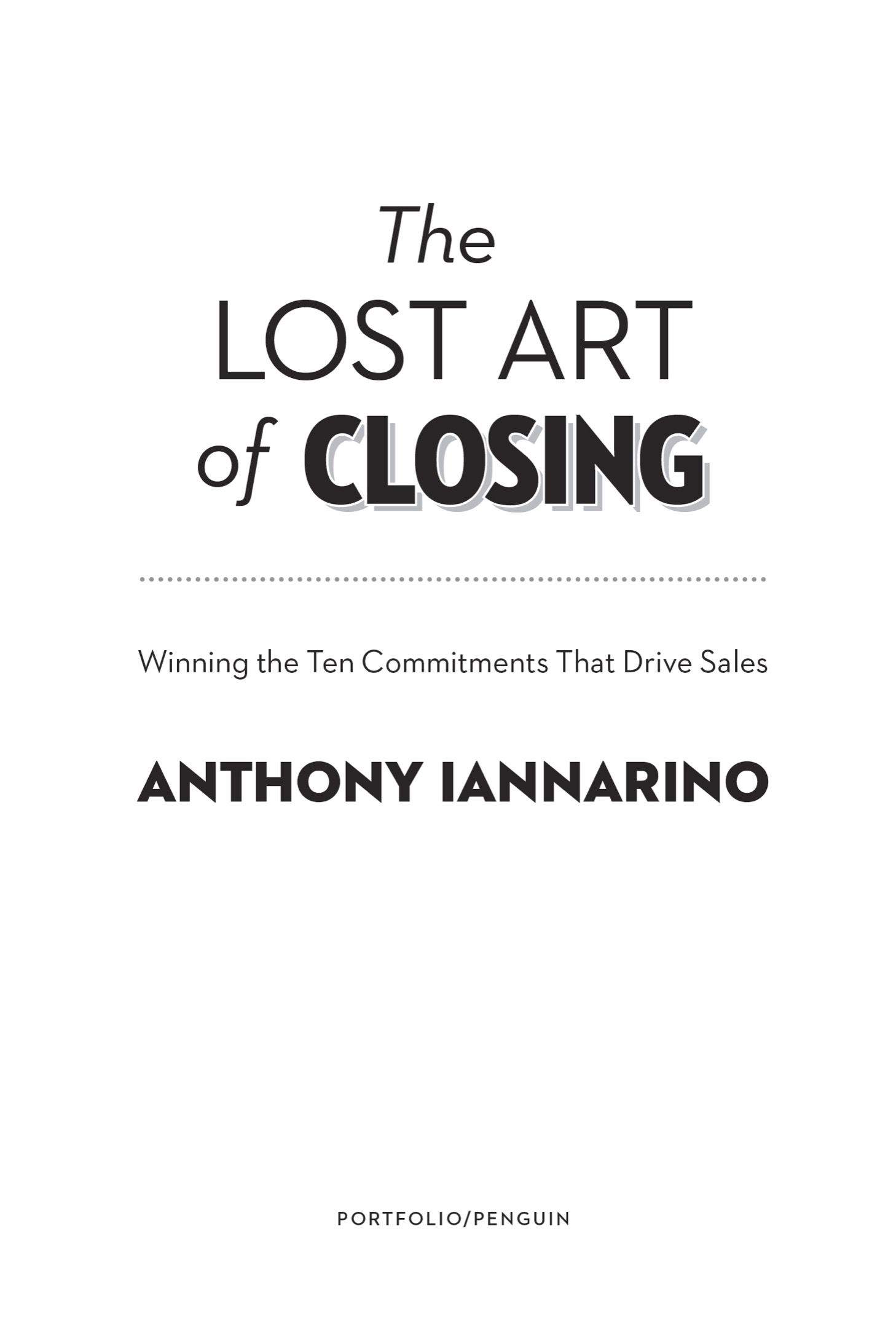Penguin supports copyright. Copyright fuels creativity, encourages diverse voices, promotes free speech, and creates a vibrant culture. Thank you for buying an authorized edition of this book and for complying with copyright laws by not reproducing, scanning, or distributing any part of it in any form without permission. You are supporting writers and allowing Penguin to continue to publish books for every reader.
Foreword by Brent Adamson and Nicholas Toman. Copyright 2017 Gartner Inc. and/or its affiliates. All Rights Reserved.
For the agitators, instigators, catalysts, and change agents. You make the world a better place.
FOREWORD
OF ALL THE OBSERVATIONS WE MAKE in The Challenger Customer, perhaps the most foundational is the dramatically increasing complexity of a typical B2B purchase. While B2B sales professionals often lament about the rapidly rising complexity of selling solutions, the far tougher challenge today isnt selling them, but buying them.
For many, its a surprising conclusion. If anything, todays customers seem far more empowered than ever before. With easy access to information, they can now independently identify more options across more suppliersall without meeting a single sales rep or taking an actual sales call. Meanwhile, supported by more colleagues across more parts of their organization, customers come to the table more determined and better equipped to extract more value across more suppliers capabilities, all at less cost. In fact, we often refer to this new reality simply as the World of More. If youre selling in the World of More, its hard to imagine that customers need any additional help buying when theyre doing such a good job putting pressure on suppliers already.
But if we take off our selling hats for a moment and place ourselves in our customers shoes, we find the world of buying doesnt feel much better. In all of our recent research into B2B buying, weve found the same theme again and again. Somewhere across the last several years, weve hit a tipping point where customers are empowered with more information and more options, but more customers have become rapidly overwhelmed with too much information, too many options, and too many people. For example, weve found the average B2B solutions purchase typically requires input from at least 6.8 individual customer stakeholders. As all of those different people collect and consider an increasingly vast array of easily accessible information spanning an ever-expanding range of possible options, more often than not the purchase process simply grinds to a halt. Customers fall into endless learning loops, where each piece of additional information raises new questions requiring still more research. The consideration of a wide set of options leads to what author Barry Schwartz refers to as the paradox of choice, hampering customers ability to choose one option over another. And ever-larger buying groups representing diverse organizational priorities struggle to find common ground on next steps, let alone an ultimate purchase decision.
The end result? Frustration. Exhaustion. Resignation. And time. In fact, a whole lot of time. In our most recent research, 65 percent of customers told us that the amount of time it took just to get to the point where they were ready to contact a supplier in the first place took as much time as they had originally budgeted for the entire purchase. In other words, its not sales reps inability to sell that slows things down, but customers own struggles to buy. Yet both suppliers and customers equally pay the price as commerce in this world comes grinding to a slow crawl.
Its really no wonder that most B2B suppliers tell us their number one competitor today isnt so much the competition as it is the status quo. Therein lies a hugely important lesson for all sales professionals. The shortest path to improved sales success lies in what Anthony Iannarino refers to as a customer-oriented approach to sales. Specifically, working with customers to identify predictable purchase obstacles, and then ensuring both their ability and commitment to moving forward at each purchase stage.
This is the new close in sales. Not closing customers on a sale, but closing customers on each of a series of necessary steps designed to prevent a purchase stall. As Anthony puts it, closing isnt a single event, but a whole series of events.... And successfully navigating each one is vital for movement to the next.
How does one win customer commitment at each of those vital moments? Thats what The Lost Art of Closing is all about. Though in many ways that art isnt really lost at all. Its actually a new art altogetherwinning customer commitment at ten specific moments along the purchase journey, specifically designed to close that part of the purchase and purposefully move customers on to the next.
With all kinds of practical help targeted to the far more pressing challenge of solution selling today, Anthony has created an invaluable step-by-step guide sure to improve the chances of any sales professional to win more business. We think its a fantastic read, and were sure you will too.
Brent Adamson and Nicholas Toman
Coauthors of The Challenger Customer
PROLOGUE
A Sort of Apology to the Reader
IF YOU READ MY PREVIOUS BOOK, right now you are saying to yourself, I thought you told me that The Only Sales Guide Youll Ever Need was the only sales guide I would ever need.
You didnt really expect that I wouldnt write another book, did you?
TOSG is a pretty comprehensive guide to selling, now isnt it? Youll no doubt do well by doing the work in that book. But selling is a complex, dynamic human interaction, and theres a greater level of performance available to you if you want it.
The truth is, I had to write this book.
The very idea of closing has changed so much that nothing that has been written before takes the new realities of sales and selling into account. The very word closing signifies only one of the many commitments you need to gain to create and win new opportunities. Right now, a lot of people are giving salespeople the advice that they should never be closing, when in fact you now need to gain at least ten commitments throughout your sales process, and maybe even more.
Historically, books on closing have started with a premise that the final ask was the most difficult part of selling. Those books started with the premise that you needed all kinds of fancy tricks and tactics to close a deal. Now that final commitment is one of the easier commitments to gain. Its all the commitments leading up to the final ask that cause us trouble.
There are too many good salespeople struggling to produce the results they need. There are too many sales organizations with pipelines full of so-called opportunities that are stalled, stuck, or something less than an opportunity. Worse still, there is still so much bad advice being doled out by charlatans and nonpracticing theorists that it is no longer possible for me to sit idly by and do nothing.


